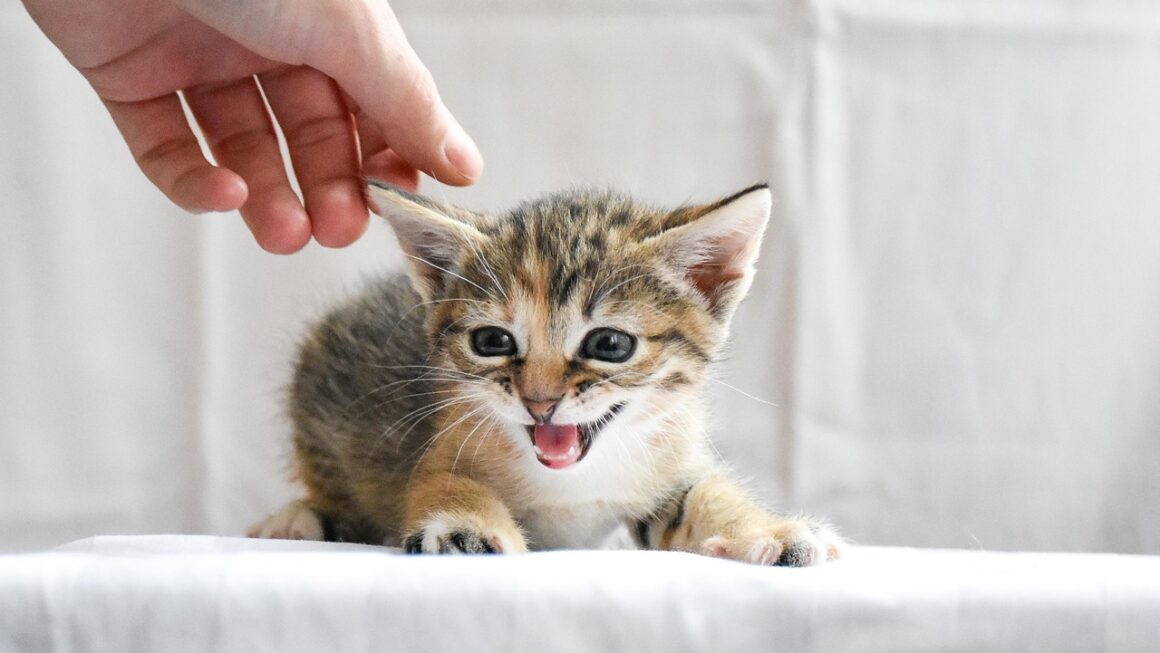Understanding the lifespan of your beloved pet is a crucial part of responsible pet ownership. It allows you to provide appropriate care throughout their life stages, anticipate potential health concerns, and cherish the time you have together. While genetics certainly play a role, factors like diet, exercise, environment, and preventative veterinary care heavily influence how long your furry, scaly, or feathered friend will be with you. This blog post will explore the average lifespans of various popular pets, the factors that impact their longevity, and what you can do to help them live their best, longest lives.
Average Lifespans of Common Pets
Understanding average lifespans provides a baseline for expectations, but remember that individual pets can vary significantly.
Dogs
Dog lifespans are heavily influenced by breed and size. Generally, smaller breeds tend to live longer than larger breeds.
- Small Breeds (e.g., Chihuahua, Yorkshire Terrier): 12-16 years.
- Medium Breeds (e.g., Beagle, Cocker Spaniel): 10-14 years.
- Large Breeds (e.g., Labrador Retriever, German Shepherd): 10-12 years.
- Giant Breeds (e.g., Great Dane, Irish Wolfhound): 7-10 years.
Specific examples: A Dachshund, known for their relatively long backs, can live up to 12-16 years, but are prone to intervertebral disc disease, which can affect their quality of life. Conversely, a Bernese Mountain Dog, a large and loving breed, typically only lives 7-10 years, often succumbing to cancers like histiocytic sarcoma.
Cats
Cats generally live longer than dogs, and breed plays a less significant role in their lifespan.
- Indoor Cats: 12-20 years. Indoor cats are safer from cars, predators, and diseases, leading to longer lives.
- Outdoor Cats: 2-5 years. The dangers of outdoor life significantly shorten their lifespan.
- Specific Breeds: Siamese and Burmese cats are known for potentially reaching 20+ years with proper care.
Example: Consider a feral cat surviving on scraps and fighting for resources; its lifespan may only be a few years. In contrast, a well-cared-for indoor cat with regular veterinary check-ups can easily live to be a senior.
Small Mammals
Lifespans vary dramatically among small mammals.
- Rabbits: 8-12 years. Proper diet and preventative care are essential for rabbit longevity.
- Guinea Pigs: 5-7 years. Vitamin C supplementation is critical for their health.
- Hamsters: 1.5-3 years. Syrian hamsters typically live longer than dwarf hamsters.
- Gerbils: 2-4 years. They are social animals, and loneliness can affect their well-being.
- Rats: 2-3 years. Prone to tumors, but with good care, can live rewarding lives.
Example: A neglected hamster in a dirty cage may only live a year, whereas a pampered rabbit with a spacious enclosure and a healthy diet can enjoy a decade of life.
Birds
Bird lifespans depend heavily on species and care.
- Parakeets (Budgies): 5-10 years.
- Cockatiels: 10-20 years.
- Larger Parrots (e.g., Macaws, African Greys): 50-80+ years. These birds are a significant commitment.
Example: A neglected parakeet kept in a small, dirty cage might only live a few years, whereas a well-socialized cockatoo with a varied diet and plenty of mental stimulation could live for decades.
Reptiles and Amphibians
Reptile and amphibian lifespans can vary enormously.
- Bearded Dragons: 5-8 years. Proper UVB lighting is essential for their health.
- Leopard Geckos: 10-20 years.
- Red-Eared Sliders (Turtles): 30-50+ years.
- Corn Snakes: 15-20 years.
- Frogs: Varies greatly by species; some live only a few years, while others can live for decades.
Example: A poorly cared-for turtle kept in a small, inadequate tank might die prematurely, while a well-maintained tortoise with a proper enclosure and diet can live for over a century.
Factors Affecting Pet Lifespan
Several factors influence how long your pet will live.
Genetics and Breed Predispositions
Some breeds are predisposed to certain health conditions that can shorten their lifespan.
- Purebred dogs often have higher rates of specific genetic diseases than mixed breeds. Example: Golden Retrievers are prone to cancer.
- Cats, while generally less affected by breed-specific diseases, can still be predisposed to certain conditions. Example: Maine Coons can be prone to hypertrophic cardiomyopathy (HCM).
- Knowing your pet’s breed allows you and your veterinarian to proactively monitor for potential health issues.
Diet and Nutrition
A balanced and appropriate diet is crucial for overall health and longevity.
- High-quality pet food formulated for your pet’s age and activity level is essential.
- Avoid overfeeding, as obesity can significantly shorten lifespan and increase the risk of health problems like diabetes and arthritis.
- Provide fresh water at all times.
- Consider supplements if recommended by your veterinarian.
Exercise and Mental Stimulation
Physical activity and mental engagement contribute to a pet’s well-being.
- Regular exercise helps maintain a healthy weight and reduces the risk of obesity-related health problems.
- Mental stimulation prevents boredom and behavioral problems, contributing to overall happiness. Puzzle toys, training sessions, and social interaction are excellent ways to keep your pet mentally stimulated.
- Consider your pet’s breed and energy level when planning exercise routines. A Border Collie needs significantly more exercise than a Bulldog.
Veterinary Care and Preventative Medicine
Regular veterinary check-ups are vital for early detection and treatment of health problems.
- Annual or bi-annual check-ups allow your veterinarian to monitor your pet’s health and identify potential problems early.
- Vaccinations protect against preventable diseases.
- Parasite prevention (fleas, ticks, heartworms) is essential for protecting your pet’s health.
- Dental care is often overlooked but crucial for preventing periodontal disease, which can affect overall health.
- Spaying or neutering can prevent certain cancers and behavioral problems.
Environment and Safety
A safe and enriching environment is essential for a long and healthy life.
- Protect your pet from hazards such as poisonous plants, cleaning products, and toxic foods.
- Provide a comfortable and safe living space that is appropriate for your pet’s needs.
- Supervise your pet outdoors to prevent accidents and injuries.
- Keep your pet away from extreme temperatures.
How to Help Your Pet Live Longer
Proactive care is key to extending your pet’s lifespan.
Choose a Reputable Breeder or Adoption Agency
- If purchasing a purebred pet, research breeders carefully to ensure they prioritize health and temperament.
- Adopting from a reputable shelter or rescue organization is a great way to give a deserving animal a loving home and support animal welfare. Shelters screen for health and temperament.
Provide a Balanced Diet and Maintain a Healthy Weight
- Work with your veterinarian to determine the best diet for your pet’s individual needs.
- Monitor your pet’s weight regularly and adjust their diet and exercise accordingly.
- Avoid giving your pet table scraps, as they can be high in calories and unhealthy fats.
Ensure Regular Exercise and Mental Stimulation
- Provide daily exercise that is appropriate for your pet’s breed, age, and health condition.
- Offer a variety of toys and activities to keep your pet mentally stimulated.
- Consider enrolling your pet in training classes to provide mental and physical challenges.
Schedule Regular Veterinary Check-Ups
- Follow your veterinarian’s recommendations for check-ups, vaccinations, and parasite prevention.
- Don’t hesitate to contact your veterinarian if you notice any changes in your pet’s behavior or health.
- Consider pet insurance to help cover the costs of unexpected veterinary care.
Create a Safe and Enriching Environment
- Make sure your home is free of hazards that could harm your pet.
- Provide a comfortable and stimulating environment that meets your pet’s needs.
- Spend quality time with your pet each day, providing love and attention.
Conclusion
Providing optimal care for your pet is an ongoing commitment, but the rewards of a long and happy life together are immeasurable. By understanding the factors that influence pet lifespan and taking proactive steps to protect your pet’s health and well-being, you can help them live their best, longest life possible. Remember to consult with your veterinarian regularly for personalized advice tailored to your pet’s specific needs. Cherish every moment with your furry, feathered, or scaled companion; they are a gift that enriches our lives in countless ways.




